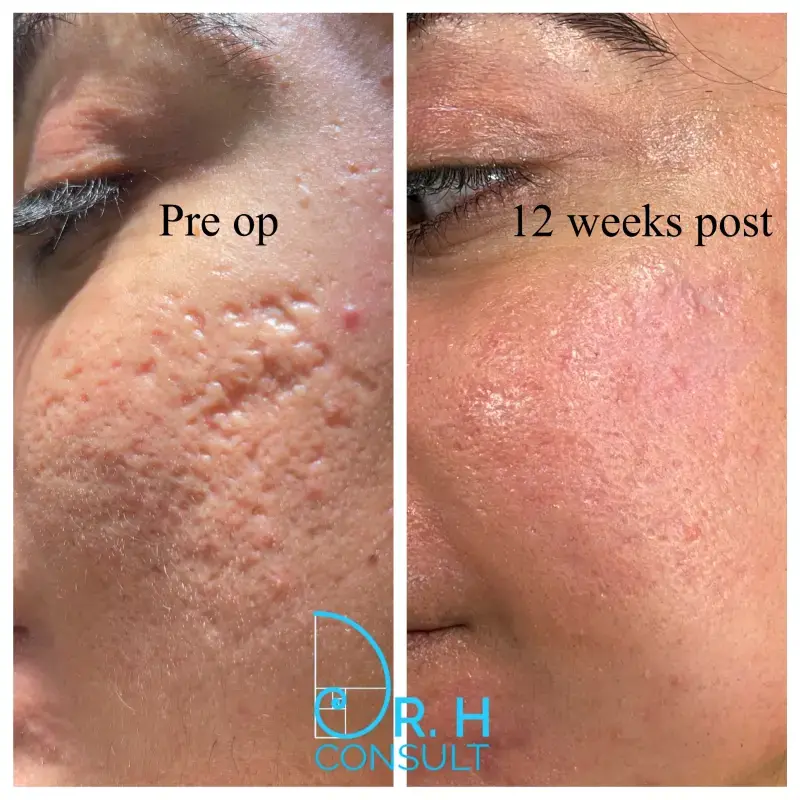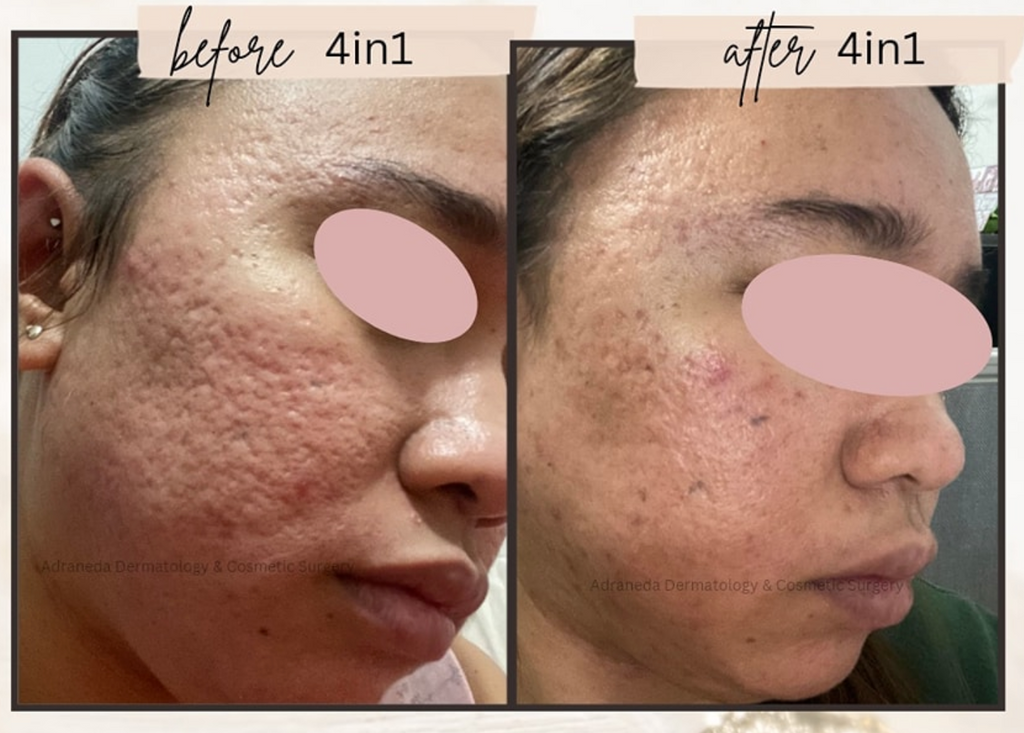Skin Rejuvenation Treatments: The Ultimate Guide to Rejuvenating Your Skin
Skin Rejuvenation Treatments: The Ultimate Guide to Rejuvenating Your Skin
Blog Article
A Comprehensive Overview to Handling Skin Problems: Concentrating on the Treatment of Acne Scars
Acne scars represent a substantial issue for many individuals, usually influencing self-esteem and overall skin health. Recognizing the various types of acne marks, such as atrophic and hypertrophic, is important for efficient administration and therapy.
Understanding Acne Marks
Comprehending acne marks involves recognizing the complicated interaction in between skin recovery and the inflammatory procedures that happen during acne outbreaks. Acne establishes when hair roots come to be obstructed with oil, dead skin cells, and bacteria, leading to swelling. skin rejuvenation treatments. This inflammatory reaction is vital for battling infection but can likewise result in damage to the skin's tissue
When the body attempts to recover itself, it produces collagen, a protein important for skin structure. Nonetheless, the amount and high quality of this collagen can differ, bring about different sorts of marks. Aspects influencing mark development consist of the seriousness of the acne, individual skin kind, genes, and the body's healing feedback.
In addition, early treatment in acne treatment can play a pivotal duty in preventing scarring. Prompt management of outbreaks reduces swelling and cells damages, which are critical consider scar growth. Education on correct skincare and treatment options is crucial for individuals prone to scarring. Ultimately, understanding the underlying mechanisms of acne and its recovery procedure is important for reliable administration and avoidance of acne scars.
Sorts Of Acne Marks
The complexity of acne scars can be categorized into several unique kinds, each mirroring the underlying skin damage and recovery feedback. The most typical kinds consist of atrophic marks, hypertrophic scars, and keloids.
Atrophic scars are characterized by clinical depressions in the skin and are frequently the outcome of insufficient collagen production during the healing procedure. These marks can even more be classified right into icepick, boxcar, and rolling scars, each varying in form and depth. Icepick marks are deep and narrow, resembling small leaks, while boxcar marks have a wider, extra angular look. Moving scars develop a wave-like appearance on the skin's surface area.
Hypertrophic marks, on the various other hand, are raised and result from an overflow of collagen throughout healing. These scars may differ in size and can sometimes fade over time but might continue to be famous.
Keloids are a much more serious type of hypertrophic scarring, extending past the initial injury site and typically calling for extra hostile treatment options. Understanding these kinds is necessary for establishing one of the most efficient treatment approach customized to an individual's particular mark kind and skin problem.
Topical Treatments
Topical therapies play a critical duty in handling acne marks, offering patients a variety of options intended at enhancing skin texture and look. These treatments largely concentrate on advertising skin regeneration, reducing coloring, and boosting overall complexion.
One of the most extensively this used topical representatives is retinoids, which are derivatives of vitamin A. Retinoids stimulate collagen manufacturing and accelerate cell turn over, helping to lessen the appearance of scars in time. In addition, alpha hydroxy acids (AHAs) and beta hydroxy acids (BHAs) can exfoliate the skin, getting rid of dead skin cells and promoting a smoother surface.
Another efficient category includes topical anti-oxidants, such as vitamin C, which can help to lighten hyperpigmentation related to acne marks while offering anti-inflammatory advantages. Silicone gels and sheets have actually been shown to moisten and flatten scars, making them much less visible.

Expert Therapy Choices
When it concerns dealing with much more severe acne marks, individuals commonly transform to expert treatment options that can supply extra remarkable results than topical treatments alone. These treatments are commonly carried out by skin specialists or certified experts and consist of different methodologies tailored to specific skin kinds and mark intensity.
One of one of the most typical therapies is chemical peels, which use acids to advertise and exfoliate the skin regeneration. This strategy can significantly minimize the appearance of superficial scars. Microneedling, another reliable option, includes developing micro-injuries in the skin to promote collagen production, boosting texture and decreasing scars.
Laser therapy is likewise commonly utilized, with fractional lasers especially targeting marked regions while preserving bordering skin. This approach can yield remarkable enhancements in skin look over a number of sessions - acne treatment for sensitive skin. In addition, dermal fillers are used to bring back quantity and smooth out unequal skin surfaces, supplying immediate, albeit temporary, results
Way Of Living and Home Treatments
Including lifestyle modifications and natural home remedy can play a considerable role in managing acne marks, enhancing professional treatments. Preserving a well balanced diet rich in vitamins, minerals, and antioxidants can assist in skin recovery. Foods high in vitamin C, such as citrus fruits, and those including zinc, like seeds and nuts, promote skin regrowth and help in reducing inflammation.
Hydration is also critical; drinking sufficient water keeps the skin hydrated, helping in its all-natural repair service procedures. Normal exercise improves blood circulation, which can enhance nutrient delivery to the skin and improve overall you can check here complexion.
Along with dietary modifications, integrating topical natural home remedy can be valuable. All-natural active ingredients such as aloe tea, vera, and honey tree oil have anti-inflammatory and anti-bacterial properties, which might help in lowering the look of marks. Scrubing the skin with gentle scrubs can also advertise cell turn over, helping in the fading of scars with time.
In addition, developing a constant skincare regimen that consists of sun security is vital, as UV exposure can dim scars. By combining these way of living alterations and home treatments, individuals can boost their skin's recovery process and attain an extra even complexion.
Final Thought

Recognizing acne scars involves acknowledging the complex interaction in between skin healing and the inflammatory procedures that occur throughout acne episodes. Elements influencing scar formation include the intensity of the acne, private skin type, genetics, and the body's recovery response.
These marks can even more be identified into icepick, boxcar, and rolling scars, each differing in shape and deepness. Icepick marks are deep and narrow, appearing like small leaks, while boxcar marks have a wider, a lot more angular look.Effective click over here monitoring of acne scars requires a comprehensive understanding of their types and the hidden systems involved in scar formation.
Report this page